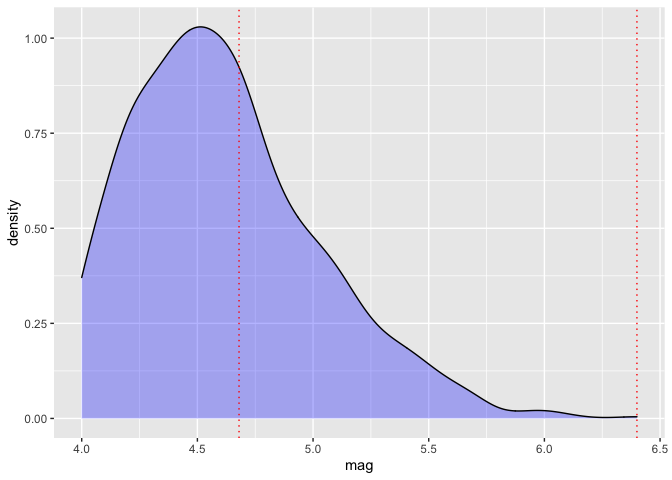
The goal of stratifyR is to construct stratification boundaries using either the continuous variable in your data or a hypothetical distribution for your variable.
You can install stratifyR using:
install.packages("stratifyR")This is a basic example which shows you how to solve a common stratification problem:
library(stratifyR)
#> Loading required package: fitdistrplus
#> Loading required package: MASS
#> Loading required package: survival
#> Loading required package: zipfR
#> Loading required package: actuar
#>
#> Attaching package: 'actuar'
#> The following objects are masked from 'package:stats':
#>
#> sd, var
#> The following object is masked from 'package:grDevices':
#>
#> cm
#> Loading required package: triangle
#> Loading required package: mc2d
#> Loading required package: mvtnorm
#>
#> Attaching package: 'mc2d'
#> The following objects are masked from 'package:base':
#>
#> pmax, pmin
## basic example code using data
data(sugarcane)
Production <- sugarcane$Production
hist(Production)
res <- strata.data(Production, h = 2, n=1000)
#> The program is running, it'll take some time!
summary(res)
#> _____________________________________________
#> Optimum Strata Boundaries for h = 2
#> Data Range: [0.42, 1570.38] with d = 1569.96
#> Best-fit Frequency Distribution: gamma
#> Parameter estimate(s):
#> shape rate
#> 1.520409984 0.009226811
#> ____________________________________________________
#> Strata OSB Wh Vh WhSh nh Nh fh
#> 1 195.18 0.68 2832.16 36.219 458 9456 0.05
#> 2 1570.38 0.32 18071.08 42.939 542 4438 0.12
#> Total 1.00 20903.24 79.158 1000 13894 0.07
#> ____________________________________________________
## basic example code using distribution
res <- strata.distr(h=2, initval=0.65, dist=68, distr = "gamma",
params = c(shape=3.8, rate=0.55), n=500, N=10000)
#> The program is running, it'll take some time!
summary(res)
#> _____________________________________________
#> Optimum Strata Boundaries for h = 2
#> Data Range: [0.65, 68.65] with d = 68
#> Best-fit Frequency Distribution: gamma
#> Parameter estimate(s):
#> shape rate
#> 3.80 0.55
#> ____________________________________________________
#> Strata OSB Wh Vh WhSh nh Nh fh
#> 1 7.47 0.63 2.61 1.014 247 6279 0.04
#> 2 68.65 0.37 7.83 1.041 253 3721 0.07
#> Total 1.00 10.44 2.055 500 10000 0.05
#> ____________________________________________________The functions can be dynamically used to visualize the the strata boundaries, for 2 strata, over the density (or observations) of the “mag” variable from the quakes data (with purrr and ggplot2 packages loaded).
library(stratifyR)
library(ggplot2)
res <- strata.distr(h=2, initval=4, dist=2.4, distr = "lnorm",
params = c(meanlog=1.52681032, sdlog=0.08503554), n=300, N=1000)
#> The program is running, it'll take some time!
ggplot(data=quakes, aes(x = mag)) +
geom_density(fill = "blue", colour = "black", alpha = 0.3) +
geom_vline(xintercept = res$OSB, linetype = "dotted", color = "red") Read the
stratifyR vignette for a complete documentation and many more examples
using 10 different distributions.
Read the
stratifyR vignette for a complete documentation and many more examples
using 10 different distributions.